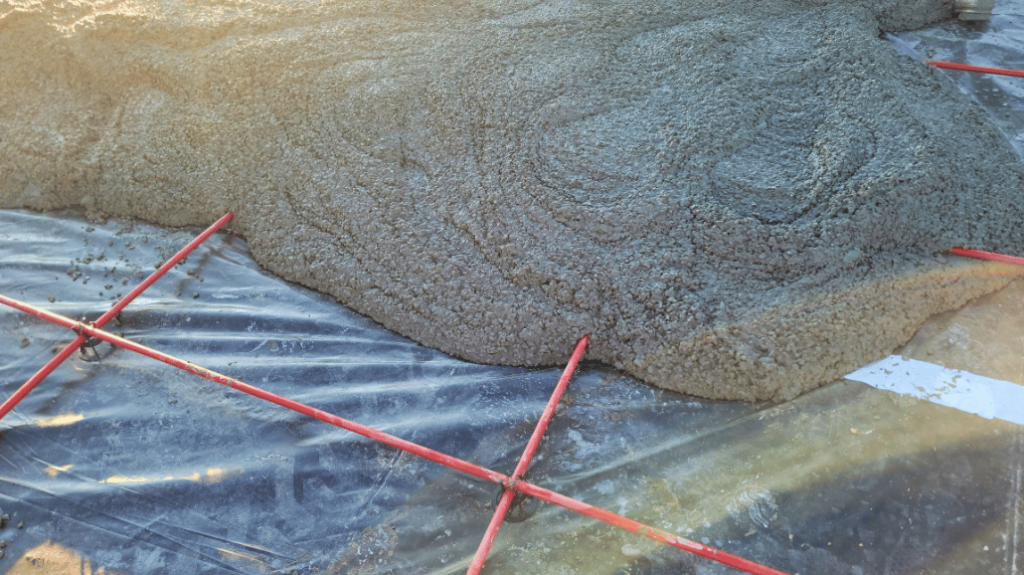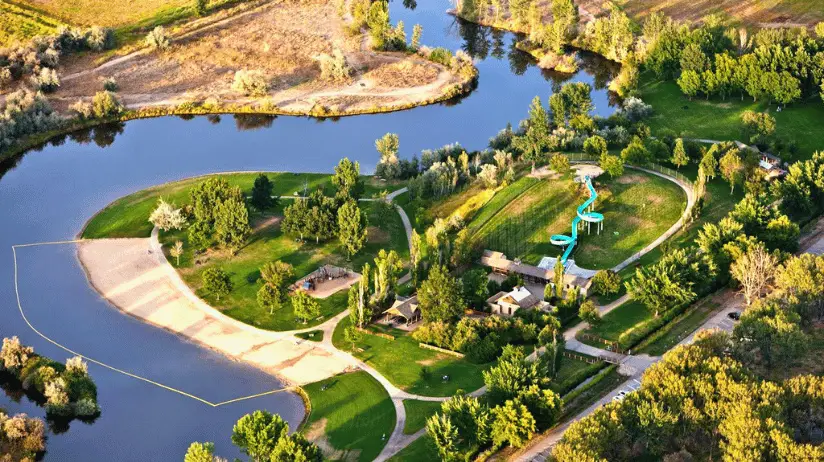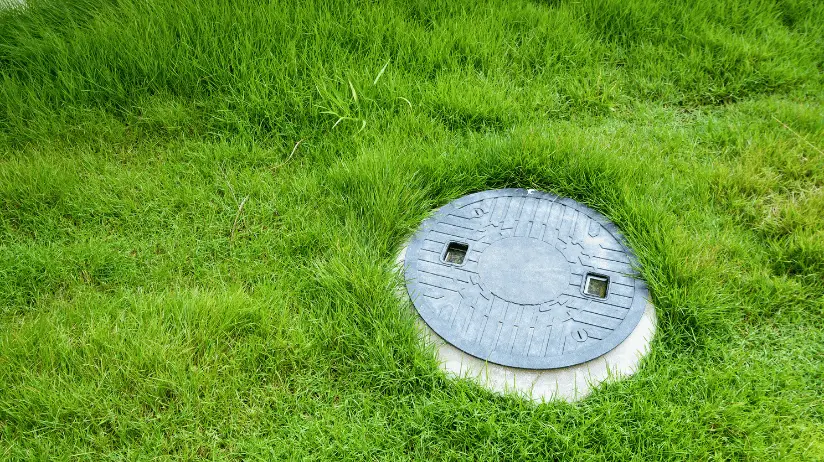Imagine a sports court that outlasts the competition, remains smooth and level for years, and requires minimal maintenance. That’s the promise of post-tension sports courts. Unlike traditional concrete courts, which are prone to cracking and shifting, post-tensioned courts offer a superior playing surface that stands the test of time.
But what makes these courts so much better? Learn how post-tension concrete courts are built and discover what makes them so durable.
What Is a Post-Tension Court?
Post-tension courts are a type of court surface built using post-tensioning. This specialized concrete construction method incorporates steel cables or tendons into a concrete slab. The cables are pulled or tensioned to create a durable, flexible surface that resists damage. Sports surfaces on post-tension concrete provide a consistent playing experience for athletes of all levels.
This innovative method is used in tennis courts, basketball courts, pickleball courts, and multi-use courts. Post-tensioning makes these courts more resilient and better suited for long-term use, especially in areas that experience extreme weather conditions or significant ground movement.
Installation Process
To install post-tension concrete, we follow these general steps:
- Prepare the area: We remove any trees, shrubs, rocks, or existing landscaping elements. Then, we grade and level the court area.
- Place tendons: Next, we place the high-strength steel tendons inside ducts, which are tubes to protect the cables from corrosion. Then, we arrange the tendons in a crisscross grid pattern.
- Pour concrete: We pour the concrete over the ducts.
- Cure concrete: We let the concrete cure about 75% of the way.
- Apply tension: Now we use hydraulic jacks to stretch the tendons. Then we anchor them to the outer edges of the concrete.
- Fill ducts: We fill the ducts with grout to protect the tendons.
- Finish the court: After the concrete cures, we finish court construction with paint and any court amenities.
The result is a stable, reinforced concrete surface that can withstand the pressure of shifting soil and temperature changes.

Benefits of Post-Tension Sports Courts
We’ve already mentioned some of the benefits of a post-tension sports court. But let’s take a deeper dive:
Durability & Longevity
One of the main advantages of post-tension courts is their superior durability. The tensioned steel cables minimize cracking and shifting, a common problem in traditional concrete sports courts. As a result, post-tension courts are less prone to damage, making them ideal for high-traffic and high-impact sports. With proper maintenance, these courts can last up to 25 years, significantly longer than conventional concrete courts, which last around 10 years.
Cost-Effective in the Long Run
Post-tension courts require a higher initial investment compared to traditional concrete. However, their long-term benefits far outweigh the upfront costs. The reduced need for repairs, resurfacing, and replacements over time makes post-tensioning a cost-effective choice in the long run. The enhanced durability means fewer cracks, less resurfacing, and minimal upkeep costs. Additionally, the extended lifespan of post-tension sports courts reduces the frequency of complete replacements.
Increased Flexibility
Post-tension sports courts are better able to adapt to the natural movement of the ground. The post-tensioning process allows the slab to move slightly without cracking, providing a more flexible and resilient surface. Contrast that to traditional concrete courts that just crack. This flexibility is especially useful in the Treasure Valley because we experience temperature extremes. These courts also better withstand seismic activity.
Smoother Surface for Play
Another significant benefit of post-tension sports courts is the smoother playing surface. Because post-tensioning minimizes cracks and uneven surfaces, players enjoy a more consistent court, leading to better ball bounce and overall performance. This smooth surface enhances safety by reducing the risk of trips and falls. Post-tension courts are an excellent choice for sports like tennis, basketball, and pickleball, where smooth surfaces are critical to gameplay.
Versatility for Multiple Sports
Post-tension sports courts can be customized for many sports, making them a versatile choice for schools, parks, and recreational facilities. Whether the court is designed for basketball, tennis, or other activities, the post-tension method ensures a durable, multi-purpose surface that can accommodate diverse sports needs. This versatility adds to the court’s value because it can be used for different activities without specialized construction for each sport.
Environmental Resistance
Post-tension sports courts stand out for their ability to resist environmental damage from Boise’s freeze-thaw cycles. Traditional concrete can expand and contract due to temperature fluctuations, leading to cracks and surface damage. However, the post-tension design mitigates this issue, providing a more stable surface that is resistant to the elements.
Lower Maintenance Needs
Maintenance for post-tension sports courts is generally lower than that for traditional concrete courts. Minimized cracking means fewer repairs over time, and smooth surfaces require less frequent resurfacing. This makes post-tension courts an attractive option for residential or commercial properties.
More Environmentally Friendly
Post-tension courts can be a more environmentally friendly option since they require fewer repairs and less frequent resurfacing. This means less waste in the form of concrete or asphalt debris and fewer emissions from construction equipment. Additionally, the longer lifespan reduces the need for energy-intensive replacements, contributing to a lower environmental footprint.
Final Thoughts: The Power of Post-Tension
Post-tension sports courts are a smart investment for building a high-quality, long-lasting playing surface. Whether for a private residence, school, or public park, these courts offer durability, flexibility, and a smoother playing experience than traditional courts. With the ability to withstand environmental factors and lower maintenance costs, post-tension courts provide long-term value and enhanced performance for athletes.
At Pleasant View Construction, we build quality sports courts, and we would love to create the court of your dreams. Reach out to us today to get a free quote for a custom court.



